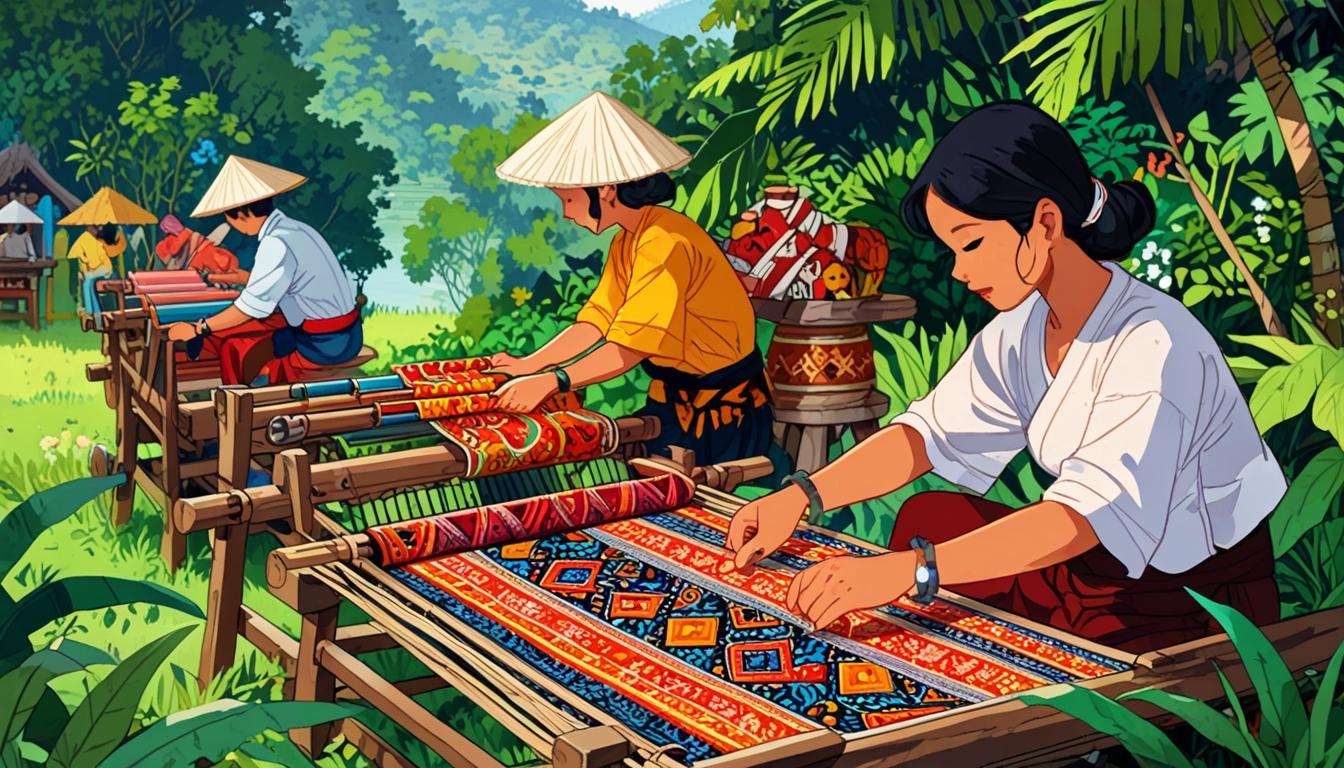The Bebali Foundation in Indonesia seeks to merge traditional textile arts with economic opportunities, highlighting the cultural philosophy of Tri Hita Karana.
On the Indonesian island of Bali, a deeply ingrained philosophy known as Tri Hita Karana emphasizes the importance of harmony among people, their environment, and the divine. It is within this cultural framework that the Bebali Foundation operates, seeking to preserve traditional textile crafts while also generating economic opportunities for local communities.
The Bebali Foundation, officially known as Yayasan Pecinta Budaya Bebali, was founded with the aim of rejuvenating diverse textile traditions and natural dyeing techniques across eastern Indonesia. Made Maduarta, the organization’s director, articulates the foundation’s mission by stating, “Here, culture, tradition, and the environment are one.” With nearly 60 culturally distinct groups involved across 12 islands, the foundation engages some of the region’s economically disadvantaged populations in its efforts to sustain their artistic heritage.
“In preserving their knowledge, the foundation serves as a common platform that connects different Indigenous groups in Indonesia,” Mr. Made notes, indicating that the work is multifaceted, focusing on both cultural preservation and community engagement. A significant aspect of this initiative is its partnership with Threads of Life, which represents over 1,200 artisans—including weavers, dyers, and farmers involved in natural-dye cultivation. The majority of these artisans are women, earning income that allows them to support their families.
Each handwoven textile produced is considered an heirloom, with intricate motifs that convey significant stories and cultural messages. For instance, on the island of Sumba, textiles featuring the kaka (cockatoo) motif symbolize community and the importance of cooperation in achieving harmony. This connection to community values reinforces the larger philosophy of Tri Hita Karana.
The benefits of the foundation’s work extend beyond individual communities. Mohamad Widodo, a senior lecturer at the Polytechnic of Textile Technology in Java, views the Bebali Foundation as vital in promoting local culture. He states, “It has become a trusted and respected partner of the artisans,” helping to narrate the stories of the communities involved.
In addition to initiatives on various remote islands, the Bebali Foundation works within Balinese villages to help preserve local cultures while establishing income-generating activities. In the coastal village of Seraya, for example, the foundation played a key role in reviving knowledge related to natural dyes, which had largely disappeared. Wayan Karya, a resident of Seraya, recalls, “We had lost almost everything with regards to natural dyes,” as villagers relied increasingly on synthetic dyes. Through Mr. Made’s guidance, the community reintroduced natural dyeing techniques, leading to a revival in the popularity of their textiles. Currently, the cooperative in Seraya grew from 10 members at its inception in 2003 to over 50, producing sought-after textiles such as the multicolored rangrang.
In the village of Sidemen, the foundation’s influence is reflected in the efforts of Ida Ayu Ngurah Puniari, who documented traditional weaving methods passed down from her father, a former Hindu high priest. Her book on bebali textiles, published with the foundation’s support, has helped raise awareness of the craft and its significance. “Thanks to their efforts, more people now know about bebali textiles and their importance,” Ms. Ngurah stated.
The foundation also emphasizes educational outreach, conducting knowledge-sharing workshops where artisans exchange ancestral knowledge about weaving, dyeing, and traditional motifs. The first of these workshops took place in 2005 on the remote island of Lembata and attracted nearly 100 participants from multiple islands. The foundation has developed an information management system to preserve the knowledge gained from these gatherings for future generations.
In terms of environmental impact, the foundation’s research focuses on sustainable dye practices, particularly concerning the Morinda tree, which produces red dyes but has traditionally required harmful harvesting methods. Mr. Made has experimented with growing saplings to minimize the destruction of mature trees, with promising results indicating that sustainable harvesting could significantly benefit conservation efforts.
As noted by Anthony Cunningham, an Australian ethnobotanist involved with the foundation, “The foundation’s work benefits both culture and nature.” Evaluating the success of development projects can take years, but Cunningham believes that the Bebali Foundation has already made a significant mark. This comprehensive approach highlights the intricate links between cultural preservation, economic opportunity, and environmental stewardship in Indonesia’s rich tapestry of textile artistry.
Source: Noah Wire Services




